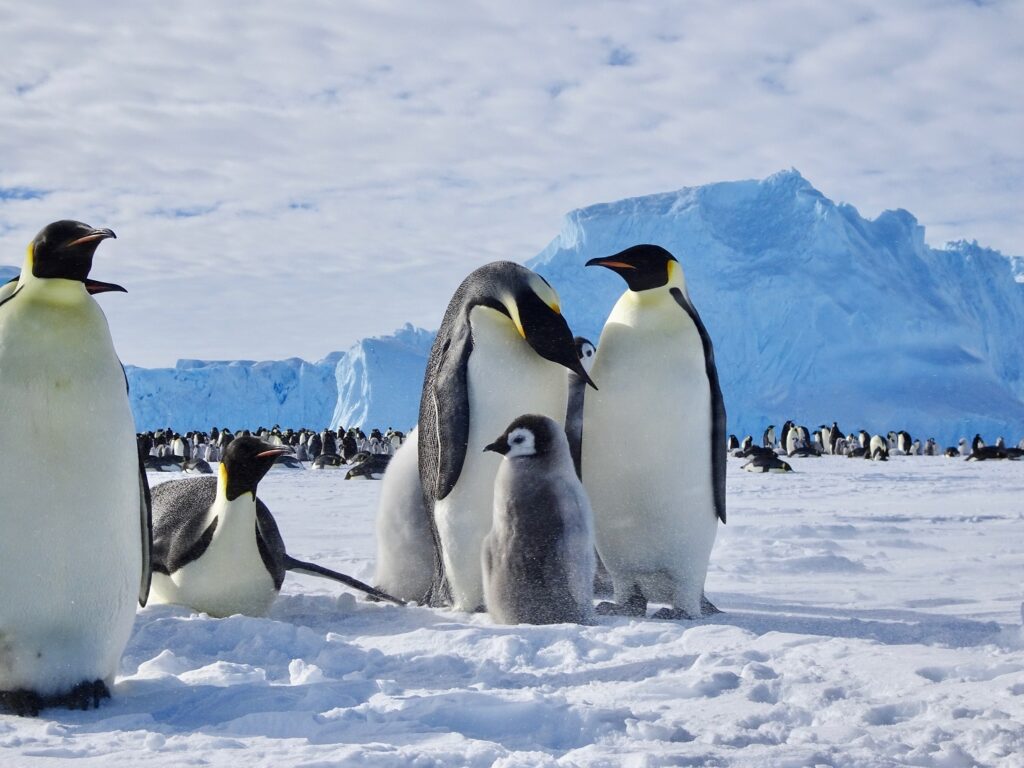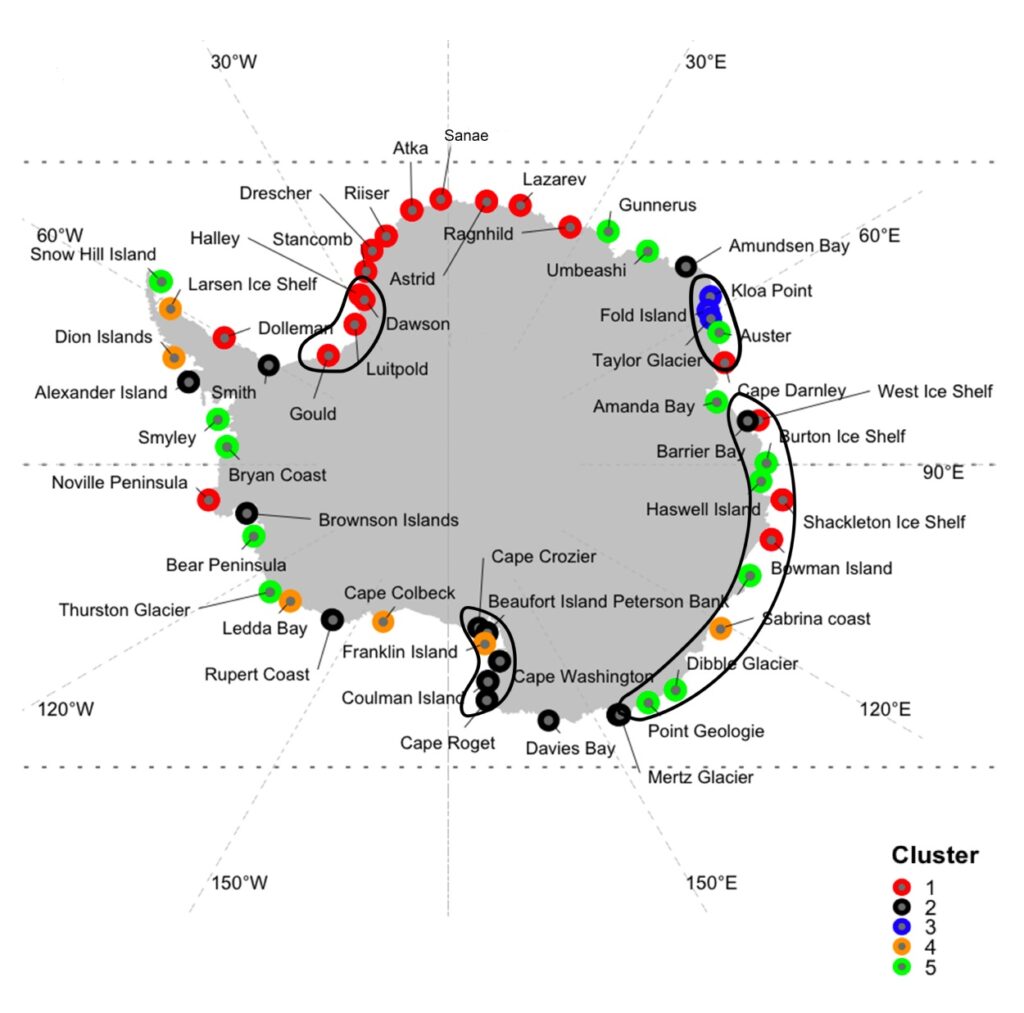More than just ice: What makes the best address for an emperor penguin colony?
28 September 2023
A new study of the habitat needs of emperor penguins show that the iconic seabirds are more flexible in their abilities to choose a place to live than previously assumed.
Emperor penguins are unique in that they breed during the harsh Antarctic winter and rely on ‘fast ice’ – stationary sea ice attached to the Antarctic coast – as a stable platform for nesting.
But it’s more than just the presence or absence of fast ice – good emperor penguin habitats comprise a range of characteristics that enable five geographic ‘neighbourhoods’ to be identified.
An interdisciplinary team from France, United States, Canada, New Zealand and Australia published ‘Where to live? Landfast sea ice shapes emperor penguin habitat around Antarctica’ in Science Advances today.

Sea ice from space
Dr Alex Fraser of the Australian Antarctic Program Partnership at the University of Tasmania helped devise the study’s methodology, which statistically analysed 18 years of satellite images of fast ice.
“Because of recent advances in determining ice types from satellite imagery, our study is the first to describe and quantify the types of emperor penguin habitats right around Antarctica at a fine scale.”
“We set out to describe the habitat of emperor penguins by identifying the underlying processes that build and maintain those habitats,” he said.
The study assumed that changes in landfast ice persistence, seasonality, timing of the maximum and minimum extents, and frequency of breaking out would influence where emperor penguins are able to settle their breeding colonies.
“The longer that landfast ice sticks around in the summer, the more time chicks have to grow their waterproof swimming feathers, which is crucially important for their survival,” said Dr Fraser.

Diversity of habitat
Lead author Dr Sara Labrousse of the National Centre for Scientific Research (CNRS) in France said her team combined high-resolution satellite images, unique landfast-ice metrics, and geographic and biological factors to identify penguin habitats around Antarctica.
“Because emperor penguin colonies are evenly spaced around Antarctica at about 220 kilometres apart, we hypothesised that competition between species would also play a part.”
“It turns out the main characteristics that define the most desirable emperor penguin habitat are a combination of physical and biological variables — persistence of the landfast ice, its seasonal amplitude, how much it breaks and forms, when it forms, when it melts, the topography of the bottom of the ocean, and how closely they are located to Adélie penguins or other food competitors,” she said.
Of five habitat types identified, four appear to match the four distinct genetic metapopulations of emperor penguins — Weddell Sea, Mawson, Ross Sea and East Antarctica — that had been recognised previously.
These findings indicate emperor penguins live in multiple regional populations in a diverse range of habitats partitioned by geography, suggesting there is some scope for their colonies to move as sea ice conditions change.
“However, previous research has already shown that the ability of emperor penguins to disperse and find more suitable climate refuges is limited, and this is supported by the genetic partitioning among Antarctic regions shown in our study,” said Dr Labrousse.
“Given projections of future sea ice changes and recent studies, if landfast ice disappears, 90% of colonies will be extinct.”
“In the short- to medium-term, the identified breeding populations and habitats should be considered as separate units for management and population projections, as certain populations may be able to survive in certain conditions and others not,” she said.

Future survival
With projections of quasi-extinction for emperor penguins by 2100 due to loss of landfast ice from global heating, the study offers essential information for conservation measures.
“Interestingly, our study raises the question of whether certain habitats have a better quality than others and would host larger size colonies than others,” the authors wrote.
“Given that our study showed that emperor penguins seem to breed in a wider range of habitats than originally thought, short to medium-term adaptation strategies to habitat change and variability may include splitting into smaller colonies.”
“However, this would assume that there are suitable areas to shift to in the future, which leads to the need for future research to continue monitoring the size and location of emperor penguin colonies to determine their fate.”

FURTHER INFORMATION ON LANDFAST ICE: New study of Antarctic landfast ice charts dramatic crash



